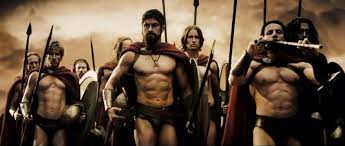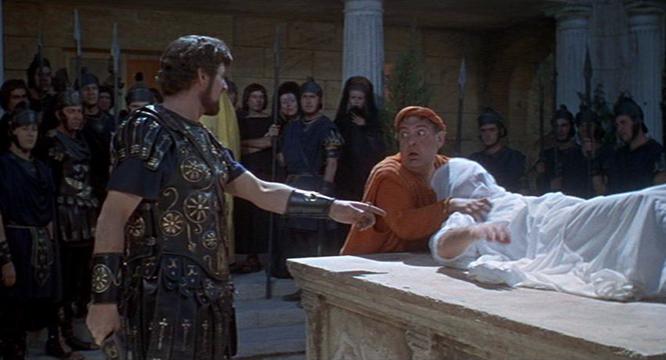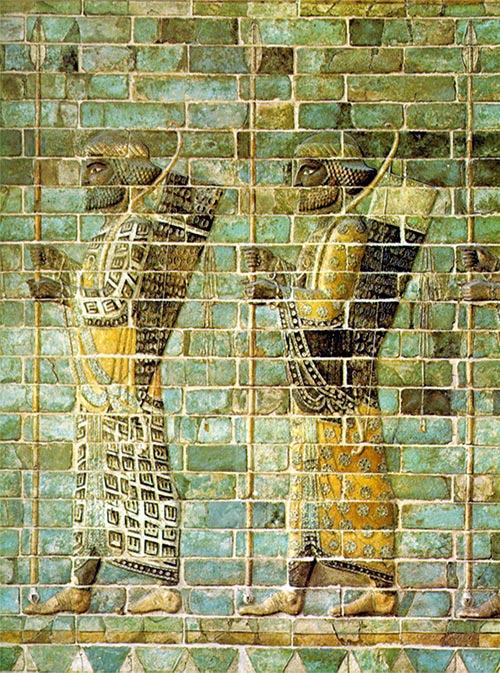The film 300(2007) is a cinematic adaptation of Frank Miller and Lynn Varley’s graphic novel with the same name. I will be exploring the contrast between the events that occurred in the Persian invasion of Greece and the fictional elements embedded by both Frank Miller and Zack Snyder. I will specifically be analyzing the Battle of Thermopylae.
First and foremost, the most profound form of historical inaccuracy in the movie is that it incorporates the idea that only 300 Spartan warriors took part in the fight against millions of Persians. According to Herodotus’ Histories Book 7, there was a group of 300 men from Sparta led by Leonidas but they were joined by other troops like the Thebans before arriving at Thermopylae(7.205.2).The exact number of participants in the war on the Greek side is unclear from ancient writers such as Diodorus who writes that 300 spartans,1000 Lacedaemonians and 3000 other Greek warriors were sent to the battle.(11.4.5). Trogus on the other hand claims that Xerxes was being challenged by a total four thousand Greek fighters led by Leonidas.(17.11).The incorporation of the fictionalized 300 Spartans by Zack Snyder goes hand in hand with the famous Hollywood’s representation of Ancient Rome and Greece with male heroic figures. The 300 men against Xerxes is a much more heroic representation than what exactly happened at Thermopylae.

Secondly, In the fourth chapter of the graphic novel, there is another representation of historical fantasy. We are introduced to the Immortals who were also at the battle and regarded as the best fighters from Persia. They were very crucial in the battle of Thermopylae because they managed to break down the Spartan defenses. The movie’s representation of the Immortals seems to conflict with the historical writings of Herodotus. They are shown in both the film and the graphic novel as non-human creatures with metal masks to hide their horrendous faces. They are first mentioned as part of the famous Persian infantry (Hdt. 7.40.1-42.2). They are later described as soldiers with special fighting formations and unique weapons. (Hdt. 7.55. 2-3). There is no mention of face deformations in the history writings about the Immortals. Because the movie is based on a graphic novel, the representation of the immortals as ugly looking creatures against the handsome and masculine Spartans satisfies the hero defeats villain genre.( Basu, 2007, 2).

The misrepresentation of history in the film has had its effects. The contrast between real history and the fictionalization of this film has raised a lot of criticism. There are many aspects of orientalism instilled in the film. One critic pointed out that the Persian military and officials in the film were mostly of a darker complexion in contrast to the heroic white, and very masculine Spartans.(Basu, 2007: 29). This is a form of prejudice that Hollywood has continued to display over the years although it continues to raise tensions for example the nation of Iran through its President unapologetically denounced and resented the film with claims of historical alteration and perversion.(Farahat, 2010,1-2). The scenes from the historical battle of Thermopylae portrayed in the film have been linked with re-awakening the political tensions between Iran and Israel. (Keshmirshekan, 2019, 306).
In conclusion, the film version of 300 by Zack Snyder managed to tell a story using a combination of captivating visuals and use of CGI. It is a kind of film produced with an aim of being a box office Hollywood classic with less attention to historical facts.
BIBLIOGRAPHY
Basu, Subho,.. ed. 2007 “300: The use and abuse of history.” The Classical Outlook, vol. 85, no. 1, American Classical League, pp. 28–32, http://www.jstor.org/stable/43939764.
Diodorus, Library of History Book xi
Farahat, Fashard. 2010 “One Iranian American wrestles with Xerxes and 300” Los Angeles Times pp. 1-7
Frank Miller,..ed.1999, 300. Dark Horse Comics
Herodotus, 1996, the Histories. Book VII, London, Eng. ; New York :Penguin Books,
Keshmirshekan, Hamid, 2019 ed. “The ‘300’ stroke.” Contemporary Art, World Cinema, and Visual Culture: Essays by Hamid Dabashi, Anthem Press, pp. 301–10, https://doi.org/10.2307/j.ctvf3w2p5.20.
Trogus, 1853, Historiae Philippicae. York street, Covent Garden.
Zack, Snyder. 2007, Director “300” Legendary Pictures


I had a great time watching this film and the impact it had with Roman movies. I believe that what Zach Snyder did was, in my opinion, a good idea. When we watch a movie, especially, an underdog type movie, we are always fascinated with whom the face. By portraying these Persians as immortal-like people, it gives us an even bigger urge to cheer for the Spartans. I think that by ignoring certain parts of historical evidence, It allows for more entertainment. Although, to your point, I due worry that this movie could corrupt people’s minds into what Roman society was like back then. I just think 300 is a film to draw more people into this realm of Ancient cultures and societies.
This blog post is very well done. You made very relevant points concerning the differences between reality and dramatization and the effects that follow doing this. It’s very accurate when you further these points by talking about Synder’s dramatization being a form of prejudice, especially against the east. I think the evidence you use is also well done as you use both ancient sources as well as bits and pieces from the movie itself.
This is a great post that examines how Snyder and the makers of 300 deviated from history. I think it is important that you brought up the similarities between the movie and the comic book as a big reason behind the poor depictions of the Persians is due to Snyder’s attempt to remain as true to the earlier work as possible. Unfortunately this was a very poor decision as Frank Miller is a known racist and his sentiment can be easily seen in his depictions of the east.